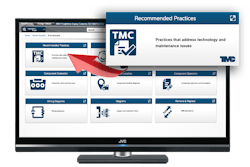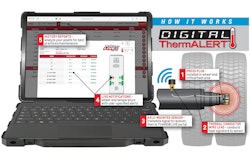Today’s fleets have a large flow of data at their disposal, and fleet managers must determine what they would like to measure.
Your Key Performance Indicators (KPIs) will certainly lead you in the right direction, so look at areas that drive key business decisions. That can be on-time preventive maintenance (PM) completion, downtime, cost per mile (CPM), repair code analysis, en route failures, etc.
Once you’ve established the topic for analysis, it’s best to look at what the leading indicator is for improving performance in that area. For example, we all know that a quality PM results in a reduction of costs, e.g., labor and parts costs versus emergency road service. Emergency road service will cost you 30% more than had you fixed a problem on a scheduled basis.
We all have schedules for our PM services, but do we know what intervals we are actually running? Do we know how many times we are bringing a unit in for unscheduled repairs between service? Are we optimizing our touches while running oil out to a safe extended drain interval? These are just several questions that get the ball rolling toward your data aggregation on a single topic.
In this example, we should be using the data to help us understand what our actual results were versus the schedule. Next it will tell us the quality of the PMs by showing us the touches between service. We have now identified what we are going to research, but there are more steps to follow on the data aggregation and analysis journey.
To achieve best in class data aggregation and analysis, you should consider the following steps.










